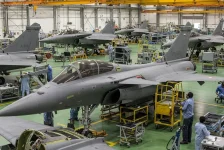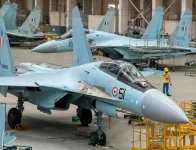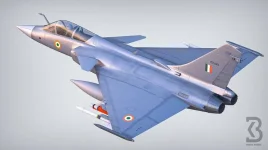- Views: 2K
- Replies: 31
The Indian Air Force (IAF) is currently facing a significant challenge with its combat aircraft numbers falling well below required levels. Officially sanctioned to operate 42 fighter squadrons, the IAF is currently managing with approximately 31 squadrons.
Defence analysts express concern that this number could decrease further if decisive steps are not taken soon, leaving the force stretched thin.
While factors such as delays in aircraft manufacturing and complex international situations contribute to this shortfall, internal decision-making processes within the IAF have also played a substantial role.
Key areas identified include persistent delays in crucial upgrades for the Su-30MKI fleet, initial reluctance to place large orders for the domestically developed Tejas Mk1 fighter even after it met initial requirements, and a prolonged period (nearly ten years) taken to finalize the specifications for the futuristic Advanced Medium Combat Aircraft (AMCA). These internal hesitations have significantly contributed to the current squadron deficit.
The Sukhoi Su-30MKI, forming the largest component of the IAF's fighter fleet with over 260 aircraft, exemplifies the issue of delayed modernization. Although this Russian-designed aircraft has served effectively, its core technology dates back to the late 1990s and early 2000s.
For several years, plans have been discussed to equip Su-30MKI with modern avionics, superior radar systems like the indigenous Uttam Active Electronically Scanned Array (AESA) radar, and updated weapon capabilities. A comprehensive "Super Sukhoi" upgrade, intended to enhance electronic warfare systems and integrate long-range missiles such as the BrahMos, has faced bureaucratic delays.
The slow pace in approving and implementing these upgrades means the Su-30MKI risks becoming less effective against potential adversaries operating newer aircraft like China's J-20 or advanced air defence networks. Recent reports suggest upgrade plans for Su-30MKI are moving forward, focusing heavily on indigenous systems, but progress remains gradual.
Similarly, the IAF's approach towards the Tejas Mk1 Light Combat Aircraft (LCA) has faced scrutiny. The Tejas achieved its Initial Operational Clearance (IOC) in 2013, representing a major step for India's indigenous defence industry. This lightweight aircraft was positioned to help replace the IAF's aging MiG-21 and MiG-27 fleets.
However, the IAF initially placed limited orders (40 aircraft) and hesitated on larger commitments, citing performance concerns and delays in achieving Final Operational Clearance (FOC), which occurred later.
Critics contend that this cautious approach hindered Hindustan Aeronautics Limited (HAL), slowed down the production rate, and delayed the integration of Tejas into front-line squadrons where it could have helped maintain squadron numbers as older MiGs retired.
Further highlighting planning challenges is the Advanced Medium Combat Aircraft (AMCA) program, India’s initiative to develop a fifth-generation stealth fighter. Intended as a long-term asset against regional air threats, the project saw nearly a decade pass before its preliminary design requirements were finalized and approved by the IAF in 2019. This pace contrasts with the faster development cycles seen elsewhere, such as China's J-20 which entered service in 2017.
Ongoing debates over AMCA's specific features, engine choices, and weapon systems have pushed the projected timeline for the AMCA's first flight towards the late 2020s (around 2028-2029, according to recent estimates following governmental prototype approvals), with squadron service unlikely before the mid-2030s. This extended timeline leaves a capability gap as older aircraft retire.
The collective impact of these delays is stark. The current IAF squadron levels present a challenge in the context of potential two-front security scenarios involving Pakistan and China, both of which have been modernising their own air forces rapidly.
The gradual retirement of older aircraft like the MiG-21s, combined with the slow introduction of replacements – exemplified by the order for 83 improved Tejas Mk1A jets only being placed in 2021 after considerable deliberation – means the IAF continues to rely heavily on its Su-30MKIs alongside aging fleets of Mirage 2000s, Jaguars, and upgraded MiG-29s.
Meanwhile, the potential production capacity of HAL remains a point of discussion, and the crucial AMCA capability is still many years from realisation, addressing the gap between the authorised and operational squadron strength should remain a critical priority for India's air defence posture.



